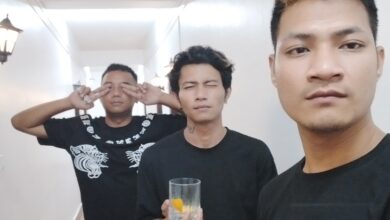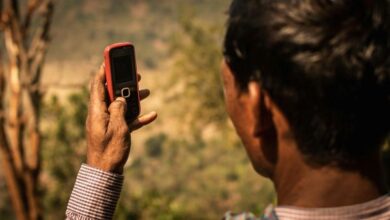Medieval economy & Assamese communities
The medieval economic renaissance of Assam centred around some most common commodities

 Economic activities drive social, political and cultural history of mankind. Materialistic necessity is directly related to the economy. Assam is a landlocked place, people are deprived of coastal trading or sea route assimilation with alien people or customs. But during the reign of the Varman dynasty and till the fall of the Palas (up to 12th century), the Kamrupa empire was extended till the Bay of Bengal. So, the people of Assam benefitted from marine resources. The medieval economic renaissance of Assam centred around some most common commodities.
Economic activities drive social, political and cultural history of mankind. Materialistic necessity is directly related to the economy. Assam is a landlocked place, people are deprived of coastal trading or sea route assimilation with alien people or customs. But during the reign of the Varman dynasty and till the fall of the Palas (up to 12th century), the Kamrupa empire was extended till the Bay of Bengal. So, the people of Assam benefitted from marine resources. The medieval economic renaissance of Assam centred around some most common commodities.
SALT
In medieval Assam, the most essential and fancy commodity of privileged sections was salt. It was a technical process extracted from the ground. The product was both politically and strategically important. Salt production was directly related to contemporary politics of localities having salt wells. The area was scattered across former Kachari Kingdom comprising today’s Dima Hasao district and greater Twensang area of Nagaland.
MYSTERIOUS CHEMKHAR
It is one of the oldest virgin villages of Assam situated 30 km east of Maibong. People of this village are unwilling to mingle with others, therefore this is a kind of virgin village. Most of the salt ponds were found in Chemkhar village. Chemkhar had a strategic position on the peak of a hill. The Kachari king deputed brave Chemcha warriors to protect the village from possible Naga aggression. Moreover, for salt ponds, Chemkhar was the highest revenue-earning place in the Kachari Kingdom.
After the fall of Maibong to Ahom in the first decade of 18th century, the place did not remain a safe haven for the Kacharis and moved to present day Silchar of Barak Valley in 1750. Eventually, Chemcha of Chemkhar remained a disconnected island and contributed to forming a separate community. They fought many fierce battles with the Angami Nagas with multi-layered barriers which made them a secluded ethnic group. Interestingly, there was a strict law of the tribe and nobody can intermarry or leave the village. So, outsiders became curious about this village and began to call it mysterious.
Later, many foreign merchants in 18th century started salt trade. Prominent among them were Jean Baptise Chevalier from France and Danielle Rous from Germany. Meanwhile, some elite Assamese brokers were engaged for collection and logistics support of salt trading.
BRASS-METAL
Besides the indigenous industry of Assam for economic self-dependence, the use of brass metal was part of the socio-religious culture of the Assamese. Alloy was prepared by fusing copper and zinc in a ratio of 70:30. The exact origin of brass metal is not properly known but its transitional and developmental period of Assam from the use of clay to metal. Brass metal is used in pre-Ahom period to make bells and other utensils for use in temples. During the neo-Vaishnavite revolution, various musical instruments like cymbals, bells were made.
Brass metal items became a kind of royal insignia. Brass metal plates were available during the Varman dynasty in 3rd/4th century also. But various shapes similar to those found in Southeast Asia flourished during the Ahom rule.
Household utensils even for common people were prepared from brass metals. This was notwithstanding the availability of cheap steel /ceramic/silver materials. For many, the beauty of Assam lies in Assamese metallurgy.
Brass metal utensils are used in formal social occasions as a show of gravity. The Lower Assam-based industry of Sarthebari was popular. Moreover, one professional class was born to manufacture brass metal materials namely, kahar. Even today, offering food in brass metal utensils is one kind of Assamese ethnic aristocracy across religions.
APPAREL OF ASSAM
Clothing is one of the most vital socio-cultural materials with utmost economic importance as long as trading and manufacturing was concerned.
With the passage of time, the sericulture industry had grown in Assam without a precise time of origin. The first reference to Assam silk was found in Valmiki’s Ramayana. There was a description of a traveller in Kishkindha Kanda of the Ramayana passing through Kosha-Karanam-bhumi (country of cocoon rearers) in the east. Later, in Kautilya’s Arthashastra, a politico-economic book of the 3rd century BC, described the ornate silk attire of Assam produced mainly from Suvarnakudyaka (modern undivided Kamrupa). Silkworms feed on leaves. According to Kalika Purana, way back in 10th century, colourful silk clothes (Muga in Assamese) were used to worship and cover deities. Dikkarvasini pitha or Tamreshwari temple of Sadiya under Chutiya Kingdom, where worshipping and covering of deity were done by Assamese silk (Muga).
Origin of silk
As a majority of Assam people are of Tibeto-Burman origin, the craft of weaving or knowledge of sericulture came with them from China in around 3000 BC. Therefore, the famous silk road started from China via Myanmar connecting India through Assam and it still exists. Sects of Bodo-Kachari tribe — Bodo, Dimasa, Rava, Sonowal, Garo, Koch, Chutiya — have introduced farming of silk of different colours and varieties in Assam. The northeast corner of Assam was the gateway to silk trade or production, and thereafter, entered the rest of India. Mongolian people originally called silk sirkek. Indian women’s popular attire saree is said to be a degenerated version of the word sirkek.
Silk under Pala, Chutiya, Ahom
Three prominent monarchies namely Pala in the west and Chutiya and Ahom in the east cultivated silkworms for cloth production. As per historical records, the Chutiya King in 1524 AD gifted muga (golden-coloured clothes) to the Ahom monarch as a peace pact. That was probably the first official introduction of muga clothes to the Ahom monarch and royals. The Ahom king and ministers were impressed, therefore hired many Chutiya weavers to weave dresses for royal households. Until 16th century, the Ahoms used to wear traditional black clothes of Yunnan province and China. Like the Assamese traditional culture Bihu, Assamese muga and paat clothes got royal recognition and patronage to become popular quickly.
Gradually, silk gained popularity in various kingdoms. But earlier, even before the Chutiyas, Dharma Pala (1035-1060) of the Pala dynasty of Pragajyotishpur invited many weaver families from famous Tantikuchi of Barpeta to settle in Sualkuchi that quickly became the Manchester of the East.
Nath Jogi & silk industry
Anybody without government or social restriction can raise muga larvae (Antheraea assama). But raising the larvae of paat clothes feeding on white mulberry plant or nuni leaves was strictly prohibited. Only the kings and royals had the right to wear paat clothes during the Ahom reign and violators were awarded capital punishment. Ahom monarchs applied a skilful strategy that common people can’t wear or rear paat. Rearing and cutting paat larvae or yarn exclusively entrusted to Nath communities only (Yugi Katonis). The status of the said community was socially lowered so that nobody could follow suit. The Nath yugis were followers and disciples of preacher Saint Gorakshnath.
Anyway, since its discovery, silk was an important material that radically changed the economy of Assam’s agrarian society.
ELEPHANT
An elephant is a symbol of power and prosperity for Assamese people with much economic importance. Elephant itself, its ivory and bone were treated as precious materials for trading and commerce. A large number of elephants were exported, and some good qualities were also imported from Sri Lanka and China. The use of elephants for communication, carrying heavy tanks or machine guns in battlefields, and amusement purposes made it the most valuable asset for trade at par with other non-living resources.
KALITA, BHUYAN & KAYASTHA
Kayasthas were mainly accountants in North India. Most of the Kalitas did accountancy in Assam, therefore, they were known as Kayasthas too. Both words are synonymous. These brilliant Aryan people were originally mercenaries or warlords. Therefore, some Bhuyans write Rai Bhuyan.
The Bhuyans became politically powerful during the power vacuum in 13th century in central Assam when Sandhya, the Pala king, moved his capital from Guwahati to western Kamatapur or north Bengal. They have maintained agrarian feudalistic economy in their autonomous region.
CURRENCY IN ASSAM
Koch King Naranarayan first launched Narayani mudra (Narayani coin) in 16th century, almost a century before the Ahom coin was launched by Jayadhvaj Singha in 17th century. Therefore, merchant Bhuyans preferred to stay in Koch territory to continue their trade instead of barter system.
SATRA (MONASTERY) ECONOMY
The Koch Kingdom did not have overt ethnic racism like in Ahom’s. Many Bhuyans got high positions in the king’s military department and some achieved positions as regional ruler also. Saint Sankerdev and Madhavdev (both are Bhuyans), who pioneered neo-Vaishnavite religion, established many satra (monastery) for disciples, devotees, conferences etc. To meet the expenses of devotees, besides royal patronage, got help from different quarters in kind. After Sankerdev, satra emerged as a strong parallel institution and economy.
EXPORT-IMPORT TRADING
After the accession of Gadadhar Singh to the throne in 1681, the Ahom conquered the undivided Kamrupa from the Mughals. The area was under Koch and Mughals and never came under the village organisation polity of the Ahom’s Momai Tamuly. This led to the development of a merchant class in that region. Along the border of the Ahom Kingdom at Hadira Chowki (near the border of Bongaigaon and Borpeta), an Ahom-controlled trading office was established. That monitored the business, both in kind and currency.
Interestingly, no foreign merchants were allowed to enter the Ahom Kingdom. Corrupted Ahom officer Duwariya Baruah was the de facto head of the business. He supervised the exchange of goods and payments of both sides swelling his pocket with black money.
The major imported items were salt, rice, ghee, sugar, gems and jewellery, glassware, spice, jute/muslin clothes etc. The major items of export were brass metal utensils, paat/muga clothes and yarn, ivory, cotton and garlic, among others.
The liberal economic policy of the Mughals and Koch in Ahom’s newly acquired Kamrupa already gave birth to a strong Kamrupian merchant class that virtually controlled the business in the Ahom Kingdom. Besides restrictions, after 1751 many Indian and foreign businesspersons, including Jean Baptist Chevalier visited Ahom court.
Although business was in full swing, weak tax collection measures with dishonest Ahom officials and Assamese traders contributed less amount to the king’s treasury. Thus, the Ahom Kingdom gradually became weak from all sides and through the Treaty of Yandaboo in 1826, the modern age started with the British occupation.
Other articles by the author:
- Influence of Sanskrit & contemporary dramas on Sankardev’s works
- Assamese history & pan-Indian assimilation




